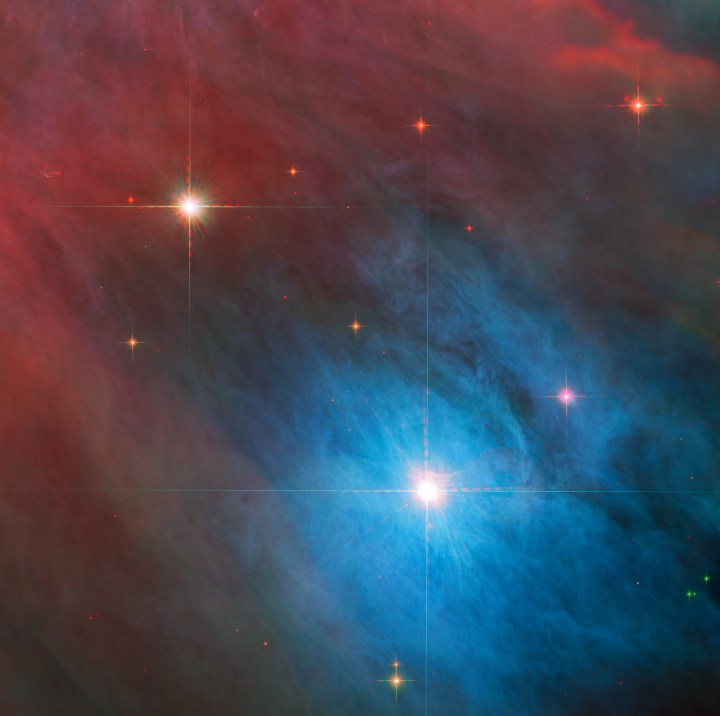The Hubble Space Telescope is one of the great achievements in modern astronomy, still producing stunning and scientifically valuable images after more than 30 years of operation. Each week, scientists working with Hubble share an image captured by the telescope, and this week’s image shows a snippet of a famous nebula along with two bright stars.
The image shows a part of the beautiful Orion Nebula, featuring the bright star V 372 Orionis just to the lower-right of the center along with a companion star to the top-left. The Orion Nebula is located 1,450 light-years away and is famous as a stellar nursery where large numbers of new stars are born.

The star V 372 Orionis is of a particular type called a variable star, meaning that its brightness changes over time. Certain variable stars, called Cepheid variables, are especially important to astronomy because they brighten in a particular way, which means they can be used to accurately estimate distances to extremely far-off galaxies. V 372 Orionis is a different type of variable, however, called an Orion variable.
Orion variables brighten and dim in an irregular manner, undergoing occasional eruptions in which they become significantly brighter than usual for a short time. They are often found within nebulae, like the Orion Nebula, where there are many young stars. It is believed that these eruptive stars are young and that they will settle into a less variable state as they get older.
The image of the stars within the nebula was taken using two Hubble instruments, the Advanced Camera for Surveys and Wide Field Camera 3. Although Hubble primarily looks in the visible light wavelengths, which are equivalent to what would be seen by the human eye, it can also look in some parts of the infrared and ultraviolet spectrums. This particular image brings together data from both visible light and infrared observations, allowing the telescope to capture both the stars and the swirls of dust and gas in which they reside.
Editors' Recommendations
- Celebrate Hubble’s 34th birthday with this gorgeous nebula image
- Hubble spots a bright galaxy peering out from behind a dark nebula
- Hubble captures the dramatic jets of a baby star
- See what James Webb and Hubble are observing right now with this tool
- Hubble spots a massive star forming amid clouds of dust and gas




